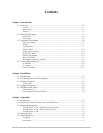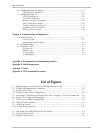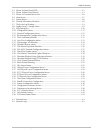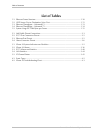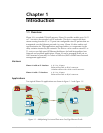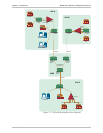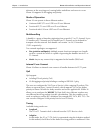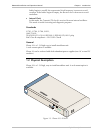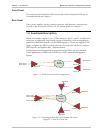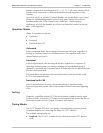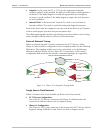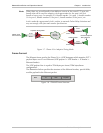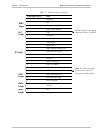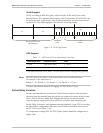
Chapter 1 Introduction IPmux-16 Installation and Operation Manual
1-4 Overview
tolerance at the receiving end, causing buffer underflows and errors to occur.
IPmux-16 supports VLAN tagging and priority.
Mode of Operation
IPmux-16 can operate in three different modes:
• Unframed full E1/T1 over UDP over IP over Ethernet
• Fractional E1/T1 over UDP over IP over Ethernet
• Fractional with CAS over UDP over IP over Ethernet.
Multibundling
A bundle is a group of timeslots originating from a specific E1 or T1 channel. Up to
31 bundles per E1 channel and 24 bundles per T1 channel can be defined for
transport over the network. Each bundle can contain 1 to 24/31 timeslots
(T1/E1 respectively).
Two network topologies are supported:
• Star (point-to-multipoint): Multiple remote locations transport one bundle
each to a central site which is capable of grooming the bundles into its E1 or
T1 channel.
• Mesh: Any-to-any connectivity is supported at the bundle (DS0) level.
Internal Cross Connect
IPmux-16 allows an internal cross connect of bundles between its E1/T1 ports.
QoS
QoS support:
• Labeling IP level priority (ToS)
• VLAN tagging and priority labeling according to IEEE 802.1 p&q
The user can configure the ToS (Type of Service) of the outgoing IP packets. This
allows an en-route layer-3 router or switch, which supports ToS, to give higher
priority to IPmux-16 traffic for delay-sensitive and secure applications. IPmux-16
allows you to configure the WHOLE ToS byte field, since different vendors may
use different bits to tag packets for traffic prioritization. This also enables you to
work according to various RFC definitions (for example RFC 2474, RFC 791). The
user can also configure VLAN priority bits for Level 2 Priority.
Timing
Available timing modes are:
• Loopback
The E1 or T1 Transmit clock is derived from the E1/T1 Receive clock.
• Adaptive
In this mode, the E1 or T1 TX clock is regenerated using the Adaptive method.
In this method, the fill level of the buffer receiving packets is monitored. If the




